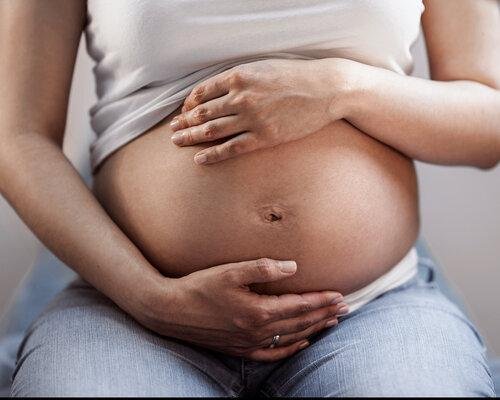
Treating hemorrhoids during pregnancy and postpartum
Share

You may or may not have been given the heads up on haemorrhoids but they are quite common during pregnancy, especially in the third trimester. Haemorrhoids can be super uncomfortable, itchy and painful but should shrink within six weeks after birth (although they may never completely go away). While this can be an extra discomfort while taking care of your new baby, there are several ways to ease your symptoms.
What exactly are haemorrhoids?
Piles, also known as haemorrhoids, are veins that have become swollen and engorged with blood - varicose veins but in your rectum, basically.
Haemorrhoids during pregnancy (or any other time) can either be inside the rectum or external and can cause pain, itching, and general discomfort, making sitting super uncomfortable.
External haemorrhoids are more likely to bleed and be itchy, while internal haemorrhoids can bleed and are typically more painful.
Why do we get haemorrhoids?
As your body increases its production of progesterone in the first couple of months of pregnancy which can cause the veins in your body to relax. As your pregnancy progresses, your heavy uterus puts pressure on nearby veins, causing tiny clumps of blood vessels in and around the rectum to bulge.
We also tend to become constipated due to hormonal changes and straining while having a poo is a risk factor for the developing haemorrhoids. You might not realise you even have them until after you give birth, and you’ve either pushed them out or irritated them enough to notice.
How do I know I have haemorrhoids during pregnancy?
Pain and itching are the two main things you will notice, which can be there all the time and worsen during bowel movements.
Sometimes you can see the haemorrhoids, which will look like soft lumps that appear in bunches around the anus or they may be sticking out.
You may also feel a lump or a mass, or even a general pressure in the rectal area.
Pregnancy haemorrhoids also tend to bleed, so check for spotting when you wipe.
What to do to try to prevent them?
One way to prevent haemorrhoids is to minimise straining so try to alleviate the strain of constipation and avoid heavy lifting when possible.
Along with hormonal fluctuations, constipation in pregnancy can also be caused by a lack of fibre so eating lots of fruits and vegetables will help to ensure you are getting enough fibre and magnesium to support a healthy bowel movement as well as drinking plenty of water and taking probiotic.
Your midwife or GP may also recommend taking stool softeners during pregnancy and after you have giving birth to help things move along and relieve constipation.
How to treat haemorrhoids at home?
Once you have haemorrhoids, you’re going to want to have the right tools on-hand to treat them at home. Here are some things that can help to relieve the discomfort.
COLD THERAPY
Cold packs or a cold compress is the best treatment for haemorrhoids because cold therapy helps soothe the pain and irritation. You can use an ice pack or try making a padsicle which is essentially a homemade cold pack - it is a frozen maternity pad filled with healing goodness that you put on your perineum for some soothing relief.
THE MAGIC OF WITCH HAZEL
Witch Hazel is a great herbal skin-soothing remedy with tannins and oils that can help reduce swelling and inflammation. It has a cooling effect and can be used to clean the area or, as a compress.
Here are our favourite ways to use witch hazel for your haemorrhoid care:
-
A few generous sprays of Witch Hazel Perineal Spray directly on your perineum or pad can provide immediate relief from pain, itching, and swelling.
-
Cotton pads that are soaked with a witch hazel solution can be folded and tucked into the folds of your bottom so they are directly in contact with the sore spot to relieve pain from haemorrhoids. Try these DIY Soothing Witch Hazel Pads.
GIVE YOURSELF A GOOD SOAK
Sitz baths are an easy home remedy for pregnancy haemorrhoids. It is essentially a warm, shallow bath or sitz pan with an Herbal Bath Soak or Epsom salt soak which can feel like the ultimate relief for painful, itchy haemorrhoids. Not only is it soothing it can also encourage the healing process.
DITCH THE TOILET PAPER
Regular toilet paper might be really uncomfortable to use as it can further irritate the area so your Perineal Cleansing Bottle will be your best friend. It can be used to gentle clean the area and adding witch hazel, essential oils the brew from your postpartum bath herb can also provide soothing relief.
LAYER ON THE RELIEF
A Perineal Balm or salve is great help to relieve itching, pain and irritation that comes with haemorrhoids. It's got lots of skin-friendly oils and healing herbs such as St. John’s wort, yarrow, calendula and arnica, making it gentle and naturally soothing without toxic chemicals.
